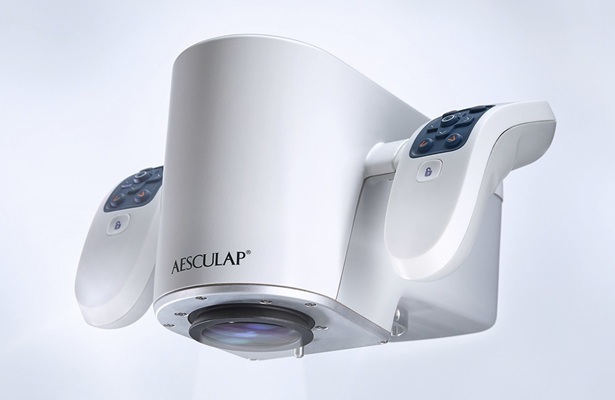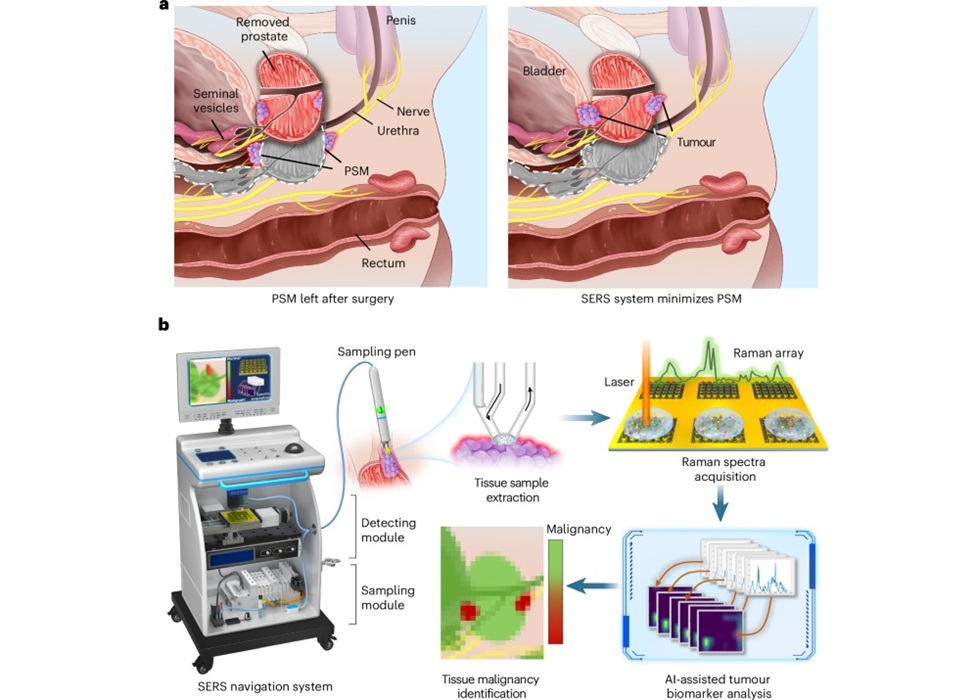Loss of Smell Loss Can Predict Increased Mortality Risk
|
By HospiMedica International staff writers Posted on 07 Apr 2017 |
A new study suggests that poor odor identification and poor self-reported olfactory function are associated with greater likelihood of future mortality, irrespective of dementia status.
Researchers at Umeå University, Stockholm University, and other institutions conducted a prospective study involving 1,774 adult participants (40-90 years of age) without dementia at baseline to determine whether dementia could explain the known association between poor olfactory performance and mortality risk. The researchers gauged olfactory performance via the Scandinavian odor-identification test (SOIT) and self-reported olfactory function; noted social, cognitive, and medical risk factors at baseline; and followed incident dementia during the following decade.
The results revealed that during the study period, 411 of the participants (23%) died. After controlling for demographic, health-related, and cognitive confounders, each additional correctly identified odor lowered the risk of mortality by 8%. Individuals with chance level results on the SOIT tests (indicating complete olfactory loss) were at a 19% higher risk of death than individuals with normal smell function. The association between SOIT score and mortality was retained after controlling for dementia conversion before death. The study was published on March 22, 2017, in Journal of the American Geriatrics Society.
“The results contribute to the growing evidence that olfactory assessments might provide insights on the aging brain,” said senior author Professor Jonas Olofsson, PhD, of the psychology department at Stockholm University. “Our results were not explained by dementia, which was previously linked to smell loss. Instead, mortality risk was uniquely predicted by smell loss. In our future research, we will try to pinpoint the biological processes that can explain this phenomenon.”
Autopsy studies have linked olfactory loss (anosmia) with the plaques and tangles in the olfactory bulb, entorhinal cortex, and the cornu ammonis regions of the hippocampus. Reduced levels of choline acetyl transferase and dopamine in the olfactory tubercle and other brain regions may also play a role, as well as decreased norepinephrine due to neurodegeneration in the olfactory bulb. Anosmia has been previously linked with cognitive decline, mild cognitive impairment (MCI), and Alzheimer's disease (AD).
Researchers at Umeå University, Stockholm University, and other institutions conducted a prospective study involving 1,774 adult participants (40-90 years of age) without dementia at baseline to determine whether dementia could explain the known association between poor olfactory performance and mortality risk. The researchers gauged olfactory performance via the Scandinavian odor-identification test (SOIT) and self-reported olfactory function; noted social, cognitive, and medical risk factors at baseline; and followed incident dementia during the following decade.
The results revealed that during the study period, 411 of the participants (23%) died. After controlling for demographic, health-related, and cognitive confounders, each additional correctly identified odor lowered the risk of mortality by 8%. Individuals with chance level results on the SOIT tests (indicating complete olfactory loss) were at a 19% higher risk of death than individuals with normal smell function. The association between SOIT score and mortality was retained after controlling for dementia conversion before death. The study was published on March 22, 2017, in Journal of the American Geriatrics Society.
“The results contribute to the growing evidence that olfactory assessments might provide insights on the aging brain,” said senior author Professor Jonas Olofsson, PhD, of the psychology department at Stockholm University. “Our results were not explained by dementia, which was previously linked to smell loss. Instead, mortality risk was uniquely predicted by smell loss. In our future research, we will try to pinpoint the biological processes that can explain this phenomenon.”
Autopsy studies have linked olfactory loss (anosmia) with the plaques and tangles in the olfactory bulb, entorhinal cortex, and the cornu ammonis regions of the hippocampus. Reduced levels of choline acetyl transferase and dopamine in the olfactory tubercle and other brain regions may also play a role, as well as decreased norepinephrine due to neurodegeneration in the olfactory bulb. Anosmia has been previously linked with cognitive decline, mild cognitive impairment (MCI), and Alzheimer's disease (AD).
Latest Critical Care News
- Magnetically Guided Microrobots to Enable Targeted Drug Delivery

- Smart Nanomaterials Detect and Treat Traumatic Brain Injuries Simultaneously
- Earlier Blood Transfusion Could Reduce Heart Failure and Arrhythmia in Heart Disease Patients
- 'Smart' Shirt Detects Epileptic Seizures in Real Time
- Skin Patch Measures Effectiveness of Flu/COVID Vaccines in 10 Minutes
- Complete Revascularization Reduces Risk of Death from Cardiovascular Causes
- Tiny Fish-Inspired Robots Navigate Through Body to Deliver Targeted Drug Therapy
- Coronary Artery Stenosis Could Protect Patients from Pulmonary Embolism Effects
- Sweat-Powered Sticker Turns Drinking Cup into Health Sensor
- Skin-Mounted 3D Microfluidic Device Analyzes Sweat for Real-Time Health Assessment
- New Therapeutic Brain Implants to Eliminate Need for Surgery
- Stem Cell Patch Gently Heals Damaged Hearts Without Open-Heart Surgery
- Biomaterial Vaccines to Make Implanted Orthopedic Devices Safer
- Deep Learning Model Predicts Sepsis Patients Likely to Benefit from Steroid Treatment
- Programmable Drug-Delivery Patch Promotes Healing and Regrowth After Heart Attack
- Breakthrough Ultrasound Technology Measures Blood Viscosity in Real Time
Channels
Surgical Techniques
view channel
New Study Findings Could Halve Number of Stent Procedures
When a coronary artery becomes acutely blocked during a heart attack, opening it immediately is essential to prevent irreversible damage. However, many patients also have other narrowed vessels that appear... Read more
Breakthrough Surgical Device Redefines Hip Arthroscopy
Hip arthroscopy has surged in popularity, yet surgeons still face major mechanical constraints when navigating deep joint spaces through traditional cannulas. Limited tool mobility and the need for an... Read morePatient Care
view channel
Revolutionary Automatic IV-Line Flushing Device to Enhance Infusion Care
More than 80% of in-hospital patients receive intravenous (IV) therapy. Every dose of IV medicine delivered in a small volume (<250 mL) infusion bag should be followed by subsequent flushing to ensure... Read more
VR Training Tool Combats Contamination of Portable Medical Equipment
Healthcare-associated infections (HAIs) impact one in every 31 patients, cause nearly 100,000 deaths each year, and cost USD 28.4 billion in direct medical expenses. Notably, up to 75% of these infections... Read more
Portable Biosensor Platform to Reduce Hospital-Acquired Infections
Approximately 4 million patients in the European Union acquire healthcare-associated infections (HAIs) or nosocomial infections each year, with around 37,000 deaths directly resulting from these infections,... Read moreFirst-Of-Its-Kind Portable Germicidal Light Technology Disinfects High-Touch Clinical Surfaces in Seconds
Reducing healthcare-acquired infections (HAIs) remains a pressing issue within global healthcare systems. In the United States alone, 1.7 million patients contract HAIs annually, leading to approximately... Read moreHealth IT
view channel
EMR-Based Tool Predicts Graft Failure After Kidney Transplant
Kidney transplantation offers patients with end-stage kidney disease longer survival and better quality of life than dialysis, yet graft failure remains a major challenge. Although a successful transplant... Read more
Printable Molecule-Selective Nanoparticles Enable Mass Production of Wearable Biosensors
The future of medicine is likely to focus on the personalization of healthcare—understanding exactly what an individual requires and delivering the appropriate combination of nutrients, metabolites, and... Read moreBusiness
view channel
Philips and Masimo Partner to Advance Patient Monitoring Measurement Technologies
Royal Philips (Amsterdam, Netherlands) and Masimo (Irvine, California, USA) have renewed their multi-year strategic collaboration, combining Philips’ expertise in patient monitoring with Masimo’s noninvasive... Read more
B. Braun Acquires Digital Microsurgery Company True Digital Surgery
The high-end microsurgery market in neurosurgery, spine, and ENT is undergoing a significant transformation. Traditional analog microscopes are giving way to digital exoscopes, which provide improved visualization,... Read more
CMEF 2025 to Promote Holistic and High-Quality Development of Medical and Health Industry
The 92nd China International Medical Equipment Fair (CMEF 2025) Autumn Exhibition is scheduled to be held from September 26 to 29 at the China Import and Export Fair Complex (Canton Fair Complex) in Guangzhou.... Read more














